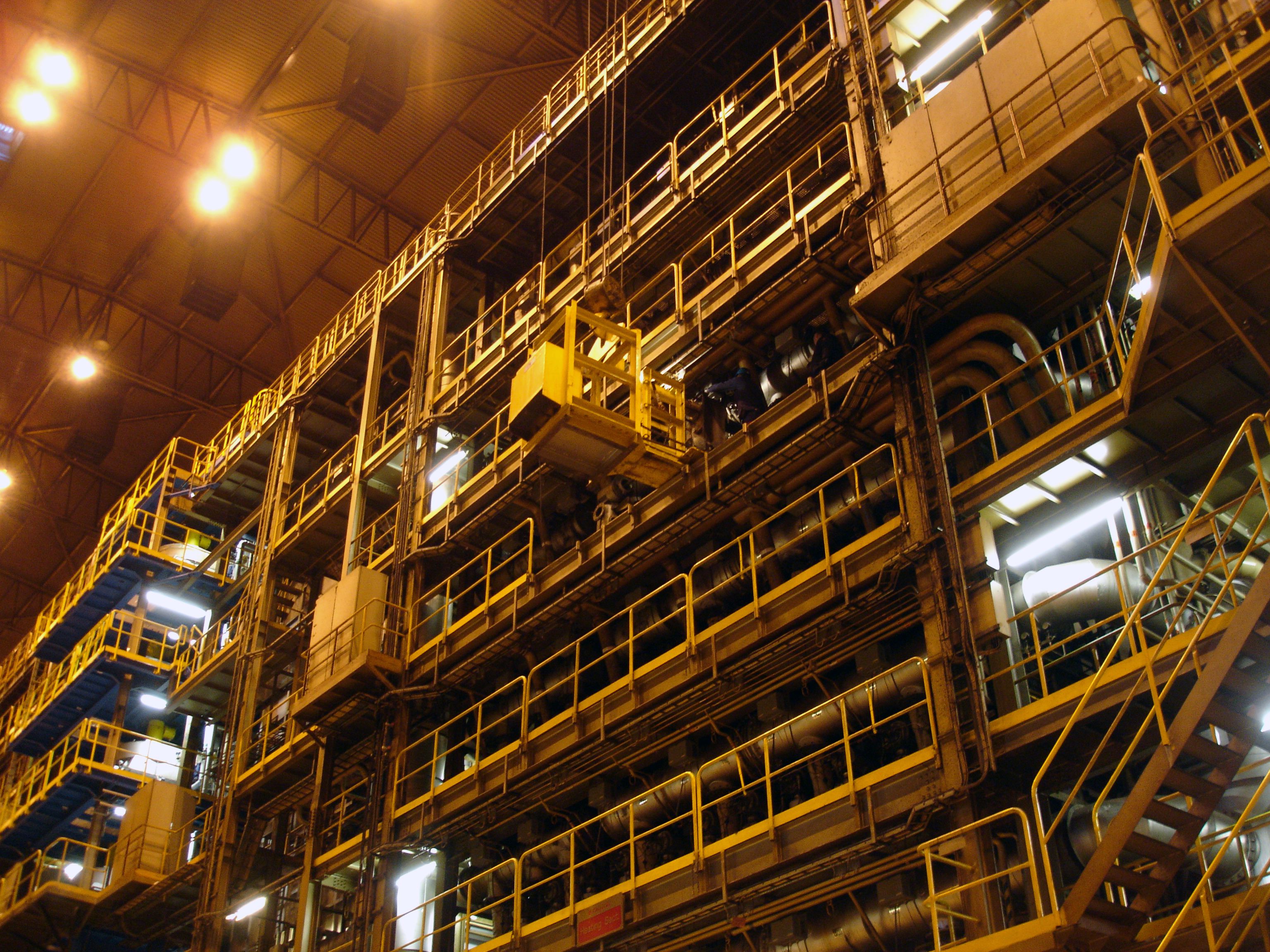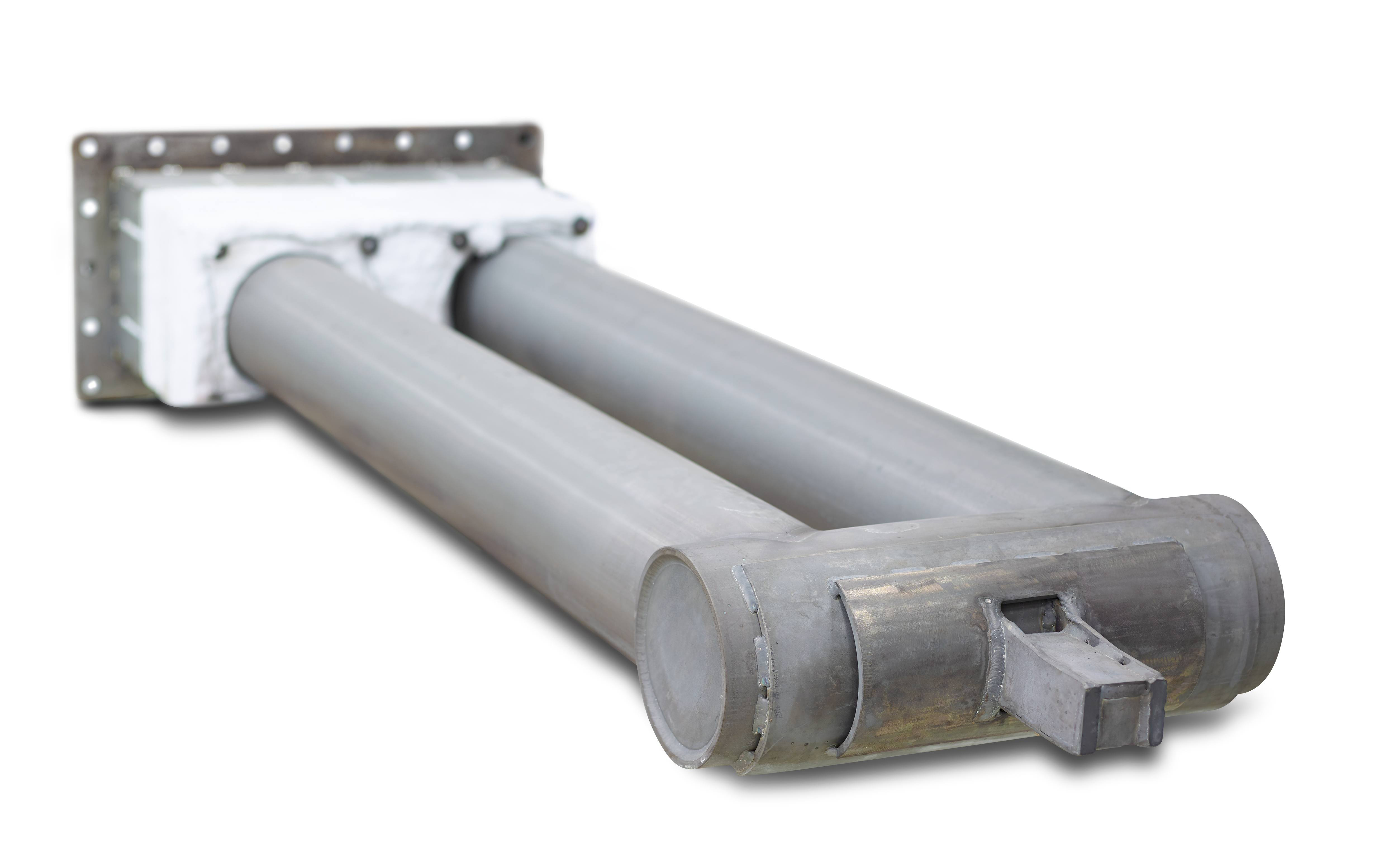 The continuous annealing line at SSAB in Borlänge, Sweden.
The continuous annealing line at SSAB in Borlänge, Sweden.
THE CHALLENGE
SSAB is a world-leading producer of high-strength and quenched steels. In Borlänge, Sweden, the company operates a continuous annealing line with a nitrogen-hydrogen atmosphere. The furnace is equipped with more than 200 W-shaped gas fired radiant tubes, each providing an output of 180 kW (615,000 BTU/h) giving 35 kW/m2 (11,100 BTU/h/ft2), sufficient to maintain a maximum strip temperature of 880ºC (1600ºF). The maximum radiant tube temperature is 1050ºC (1920ºF).
In the most demanding zone of the furnace, the average life of the radiant tubes is between 1–4 years. Deformation of the burner leg is the main reason for the exchange of tubes. Three maintenance stops are planned each year, during which 30–50 tubes are replaced annually.
Prolonging the life of the radiant tubes would permit SSAB to increase the production time and improve throughput capacity. This could be achieved either by reducing the total number of maintenance stops, and/or by exchanging fewer tubes during each shutdown period.
THE SOLUTION
Kanthal radiant tubes made of Kanthal® APMT or Kanthal® APM offer long service life through excellent oxidation, carburization and high resistance to sagging. Both are advanced powder metallurgical, dispersion strengthened, ferritic iron-chromium-aluminum alloys that can be used at tube temperatures up to 1250°C (2280°F). Kanthal® APMT is the premium alloy with the highest mechanical strength.
Two hybrid W-tubes were installed in the highest temperature zone of the furnace, with the burner legs made from Kanthal® APMT and the rest from a nickel-chromium alloy.
THE RESULT
The Kanthal tubes were first inspected after 1.5 years of operation. Measurements showed sagging in the range of 0–2 mm (0–0.1 in). The reference cast tubes (iron- nickel-chromium and iron-nickel-chromium-niobium) had sagged 55–65 mm (2.2–2.6 in) during the same period.
At the inspection after 2.4 years in operation, sagging of the Kanthal® APMT tubes was 0–5 mm (0–0.2 in). The last remaining reference tube had sagged 110 mm (4.3 in), and was replaced. The other references (four in total) were replaced after 1.5–2 years.
Extrapolation of the first inspection results indicates a threefold life potential of the W-tubes, and that the life limiting factor is the deformation of the second leg of the cast (nickel-chromium) tube section.
A second test period was started with the additional installation of two all Kanthal® APM W-shaped tubes. It was determined that already Kanthal® APM will considerably prolong the life of the W-tubes to the desired level.
Longer tube life allows for fewer furnace shutdowns. With the new alloys it is also possible to increase the tube temperature, and thereby increase the throughout capability of the furnace.
